
485th goes to Poland!
2 historical cities - Kraków, Wrocław
+ 2 USAAF targets - Blechhammer, Oświęcim
+ 2 B-24 memorials - Zygodowice, Jeleśnia
+ 2 Nazi camps - Auschwitz-Birkenau, Stalag Luft III (Sagan)
+ 2 USAAF targets - Blechhammer, Oświęcim
+ 2 B-24 memorials - Zygodowice, Jeleśnia
+ 2 Nazi camps - Auschwitz-Birkenau, Stalag Luft III (Sagan)
= 7 days
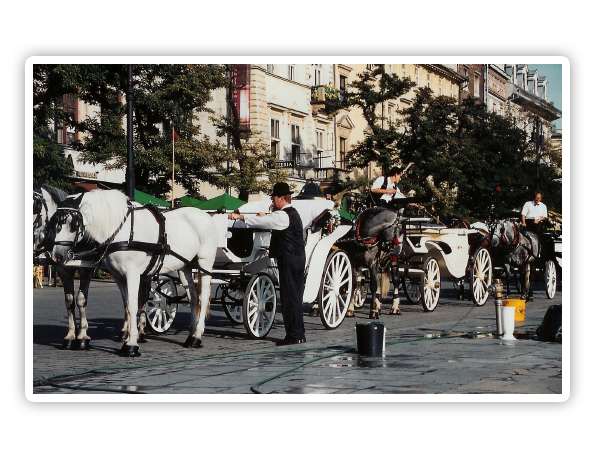
Trip Schedule
12 - 18 July 2015 | 16 - 22 August 2015
Day 0 - arrivals to Kraków
Day 1 - Kraków Castle and Old Town
Day 2 - Jewish Kraków, Wieliczka Salt Mine
Day 3 - Auschwitz death camp
Day 4 - Wadowice, Jeleśnia - B-24 memorials
Day 5 - Blechhammer USAAF WWII target
Day 6 - Żagań Stalag Luft III POW camp
Day 7 - Wrocław Old Town
Day 7 +1 - departures from Kraków
Day 1 - Kraków Castle and Old Town
Day 2 - Jewish Kraków, Wieliczka Salt Mine
Day 3 - Auschwitz death camp
Day 4 - Wadowice, Jeleśnia - B-24 memorials
Day 5 - Blechhammer USAAF WWII target
Day 6 - Żagań Stalag Luft III POW camp
Day 7 - Wrocław Old Town
Day 7 +1 - departures from Kraków
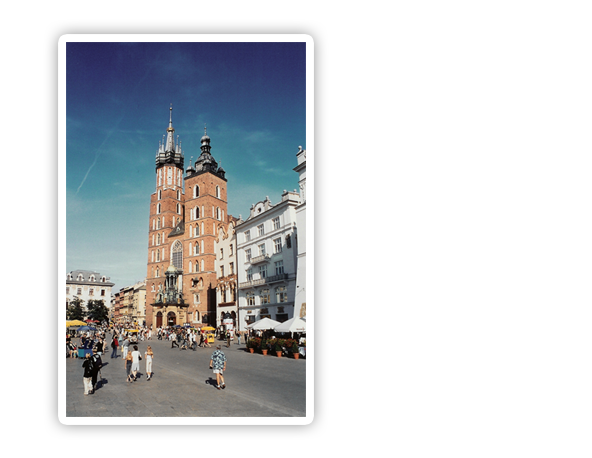
Your Guide
Szymon Serwatka
I am Szymon. I will be your personal guide and your driver. You may remember me from the 485th BG reunions in Tucson, AZ (2005) and Dallas, TX (2014). I have been researching USAAF missions to Poland for the last 20 years. My research includes several 485th Bomb Group crews, and I have been helping to find American MIAs in Poland, too.
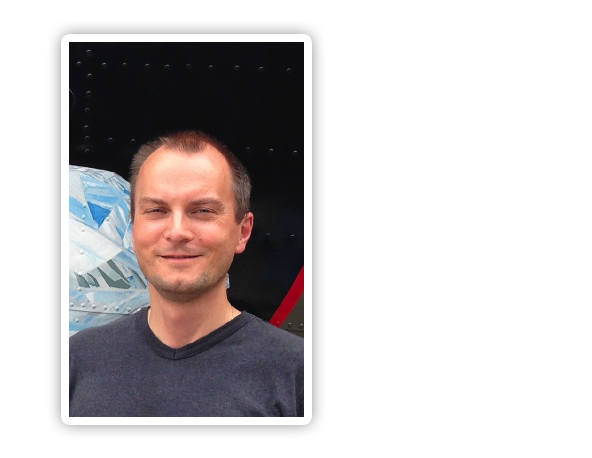
Day 1
We will take a 3-hour tour of Krakow Old Town in an electric cart.
We will see the Royal Castle and the Cathedral on the Wawel Hill.
We will visit the market square with a historical trade hall, St. Mary’s Church, and an underground exhibition about medieval Kraków.
We will see the Royal Castle and the Cathedral on the Wawel Hill.
We will visit the market square with a historical trade hall, St. Mary’s Church, and an underground exhibition about medieval Kraków.
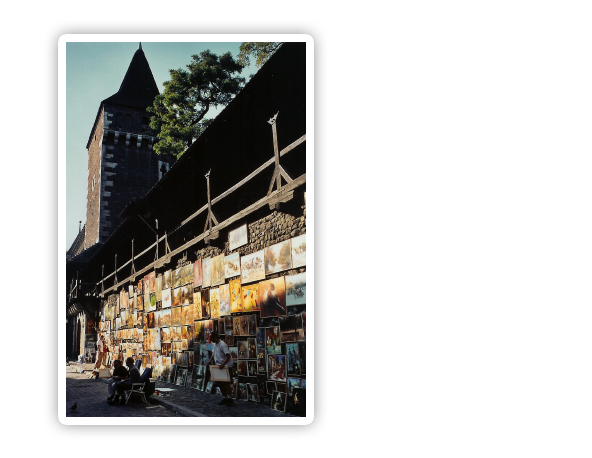
Day 1 - details
Kraków’s Old Town was one of the first places on the UNESCO World Heritage List.
Its Main Square is the largest medieval town square in Europe.
Sukiennice (Cloth Halls) is the main landmark of the square and it dates back to 15th century.
Life in medieval Kraków is recreated in a modern museum in the square’s underground.
Its Main Square is the largest medieval town square in Europe.
Sukiennice (Cloth Halls) is the main landmark of the square and it dates back to 15th century.
Life in medieval Kraków is recreated in a modern museum in the square’s underground.
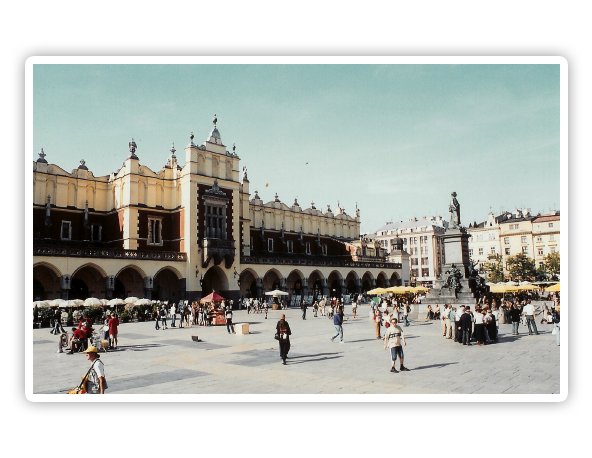
Day 1 - details
Krakow was a capital of Poland for more than 500 years, before the capital was moved to Warsaw in 1596.
The Royal Castle and the Cathedral are located on the Wawel Hill.
You will visit the Royal Chambers in the Castle and the Cathedral where most of Poland’s kings were crowned and are buried.
A legend says a dragon lived in a cave under the castle. The cave’s entrance sports a dragon sculpture which spits fire, courtesy of Krakow gas supply company. :)
The Royal Castle and the Cathedral are located on the Wawel Hill.
You will visit the Royal Chambers in the Castle and the Cathedral where most of Poland’s kings were crowned and are buried.
A legend says a dragon lived in a cave under the castle. The cave’s entrance sports a dragon sculpture which spits fire, courtesy of Krakow gas supply company. :)
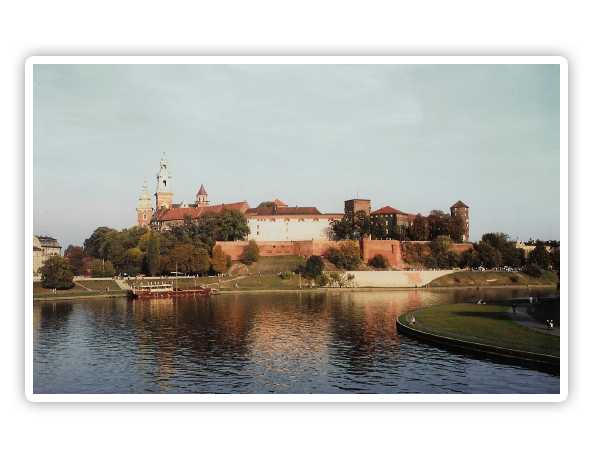
Day 1 - details
St. Mary’s Church in the Main Square is one of the most recognizable landmarks of Kraków.
The Church’s main treasure is a wooden altarpiece of Veit Stoss. Carved in the late 15th century, it is largest Gothic altarpiece in the world.
Every hour, a trumpet signal is played from a tower of this church. The signal ends abruptly to commemorate the 13th century trumpeter who was killed by an arrow when he sounded an alarm seeing an approaching Mongol army.
The Church’s main treasure is a wooden altarpiece of Veit Stoss. Carved in the late 15th century, it is largest Gothic altarpiece in the world.
Every hour, a trumpet signal is played from a tower of this church. The signal ends abruptly to commemorate the 13th century trumpeter who was killed by an arrow when he sounded an alarm seeing an approaching Mongol army.
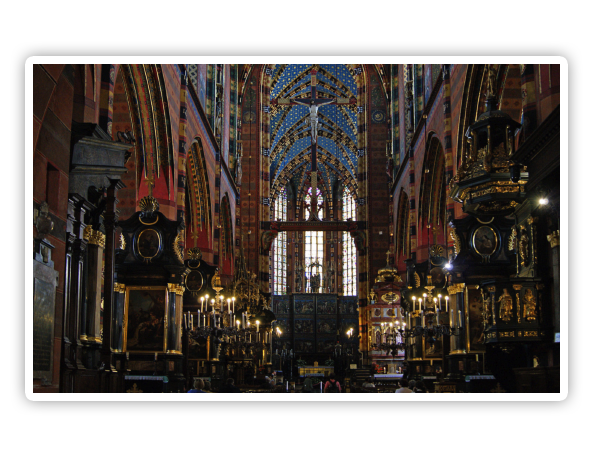
Day 2
We will go to a historical Salt Mine in Wieliczka, a UNESCO World Heritage Site.
Then we will visit a museum in Schindler’s factory, made famous by Spielberg’s "Schindler’s List".
We will end the day in Kazimierz, Kraków’s Jewish district, where you will see a medieval Gothic style synagogue.
Then we will visit a museum in Schindler’s factory, made famous by Spielberg’s "Schindler’s List".
We will end the day in Kazimierz, Kraków’s Jewish district, where you will see a medieval Gothic style synagogue.
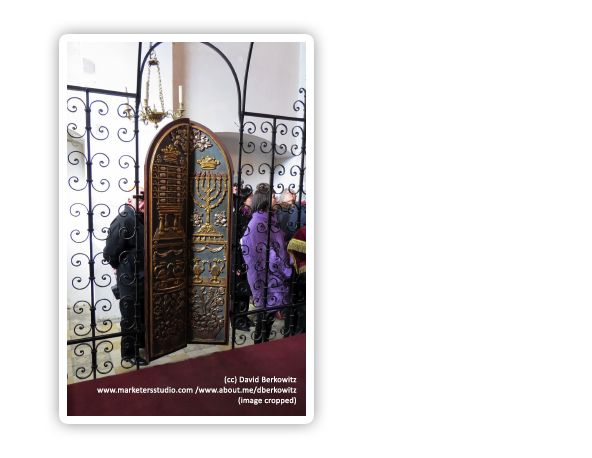
Day 2 - details
The Salt Mine in Wieliczka has been in operation since 13th century until 2007 when it was closed for mining.
It is a fabulous tourist attraction where you can see the old mining methods and, more importantly, the sculptures made of salt crystal.
The most famous undeground room is St. Kinga’s Chapel. Obviously, the altar, sculptures and reliefs are made of salt.
The Chapel is used for concerts, weddings, and other ceremonies.
It is a fabulous tourist attraction where you can see the old mining methods and, more importantly, the sculptures made of salt crystal.
The most famous undeground room is St. Kinga’s Chapel. Obviously, the altar, sculptures and reliefs are made of salt.
The Chapel is used for concerts, weddings, and other ceremonies.

Day 2 - details
After the Holocaust, deserted Kazimierz became sort of a ghost town.
This part of the city was brought back to life in 1990s after Spielberg filmed the "Schindler’s List" here.
Schindler’s factory was converted into a museum which shows the history of Krakow in World War Two.
Part of the museum is Schindler’s personal office with a symbolic Arch of Survivors, filled with metal pans - similar to those produced by Jews saved by Schindler.
This part of the city was brought back to life in 1990s after Spielberg filmed the "Schindler’s List" here.
Schindler’s factory was converted into a museum which shows the history of Krakow in World War Two.
Part of the museum is Schindler’s personal office with a symbolic Arch of Survivors, filled with metal pans - similar to those produced by Jews saved by Schindler.
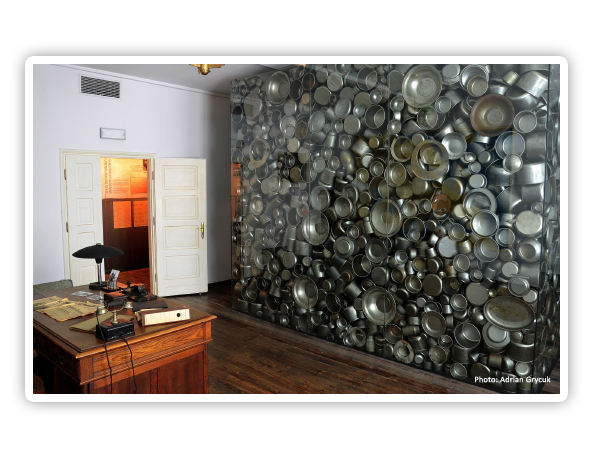
Day 2 - details
After Spielberg’s movie investments were attracted to Kazimierz, and today it is one of the most fashionable parts of Krakow, with restaurants, pubs, hotels, and cultural events.
6 synagogues are still here, and the oldest one is the Old Synagogue, built in Gothic style in late 15th century.
Probably, the most famous Jewish person from Kraków was Helena Rubinstein (1872-1965, who built a cosmetics empire, and to this day ranks as #1 of richest women in history.
6 synagogues are still here, and the oldest one is the Old Synagogue, built in Gothic style in late 15th century.
Probably, the most famous Jewish person from Kraków was Helena Rubinstein (1872-1965, who built a cosmetics empire, and to this day ranks as #1 of richest women in history.
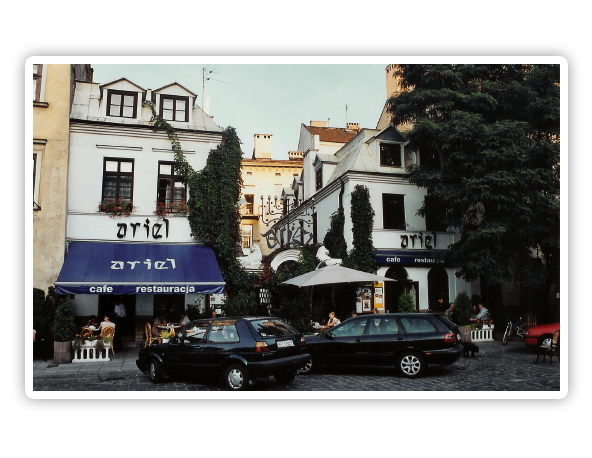
Day 3
We will visit Auschwitz-Birkenau extermination camp where 1 million of Jews were murdered, together with 70,000 non-Jewish Poles, and 30,000 people from other nationalities.
We will see ruins of the IG Farben chemical factory at Auschwitz which was bombed 3 times by the USAAF, including the September 13th 1944 mission by the 485th Bomb Group.
We will see ruins of the IG Farben chemical factory at Auschwitz which was bombed 3 times by the USAAF, including the September 13th 1944 mission by the 485th Bomb Group.
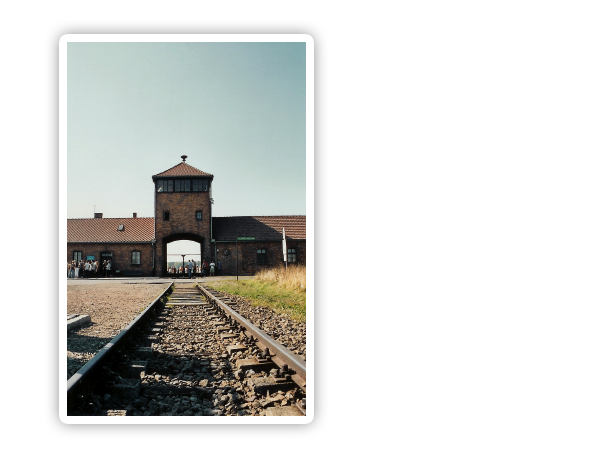
Day 3 - details
Auschwitz I was opened in summer 1940. It was first intended for Polish political prisoners.
Later, when Auschwitz-Birkenau was built, Auschwitz I served as administration center, and it is here where criminal medical experiments were conducted.
Block 11 was the camp’s prison where inmates were cruelly tortured and murdered. It is here where the first experiments to gas people with Zyklon B were conducted.
Later, when Auschwitz-Birkenau was built, Auschwitz I served as administration center, and it is here where criminal medical experiments were conducted.
Block 11 was the camp’s prison where inmates were cruelly tortured and murdered. It is here where the first experiments to gas people with Zyklon B were conducted.
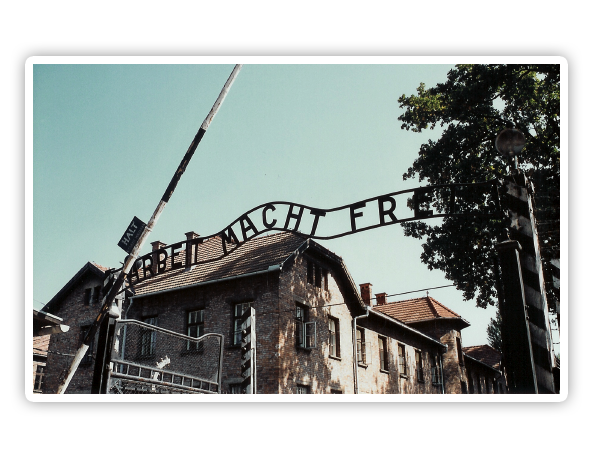
Day 3 - details
Auschwitz II - Birkenau was firstly intended to address the congestion at the Auschwitz I camp. It was planned for 50,000 slave labor, and later plans called for as many as 200,000 inmates.
It was soon selected as the main site for extermination of Jews. This is the ramp where the rail transports came, and the gas chambers wer built at the back where the trees are.
Those who survived the selection as able to work, worked in horrible conditions as slave labor.
It was soon selected as the main site for extermination of Jews. This is the ramp where the rail transports came, and the gas chambers wer built at the back where the trees are.
Those who survived the selection as able to work, worked in horrible conditions as slave labor.
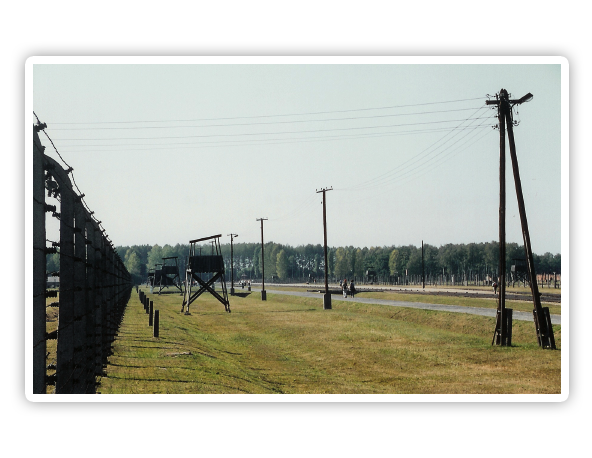
Day 3 - details
IG Farben selected Auschwitz for a new synthetic rubber factory. The building started in spring of 1941.
They bought slave labor from Auschwitz camps, and soon built a camp (Auschwitz III) for them. Life expectancy in this camp was 3 months.
The factory was targeted by the heavy bombers of the US 15th Air Force. The factory was bombed 3 times, and the 485th BG was there on 13/9/44. On this day the "bombs away" point was right above the Auschwitz-Birkenau ramp and gas chambers.
They bought slave labor from Auschwitz camps, and soon built a camp (Auschwitz III) for them. Life expectancy in this camp was 3 months.
The factory was targeted by the heavy bombers of the US 15th Air Force. The factory was bombed 3 times, and the 485th BG was there on 13/9/44. On this day the "bombs away" point was right above the Auschwitz-Birkenau ramp and gas chambers.
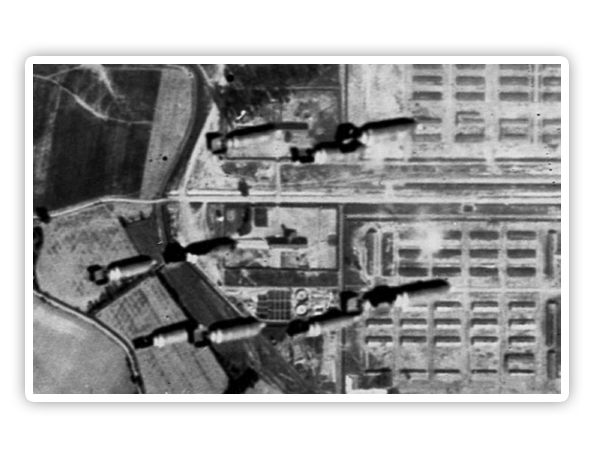
Day 4
This day is related to the USAAF bombing of IG Farben in Auschwitz on September 13th, 1944.
We will visit memorials to two B-24 crews who were shot down on this date. One was from the 485th (we will see the crash site) and the other from the 460th Bomb Group.
We will also see a Polish-American museum in Wadowice.
We will visit memorials to two B-24 crews who were shot down on this date. One was from the 485th (we will see the crash site) and the other from the 460th Bomb Group.
We will also see a Polish-American museum in Wadowice.
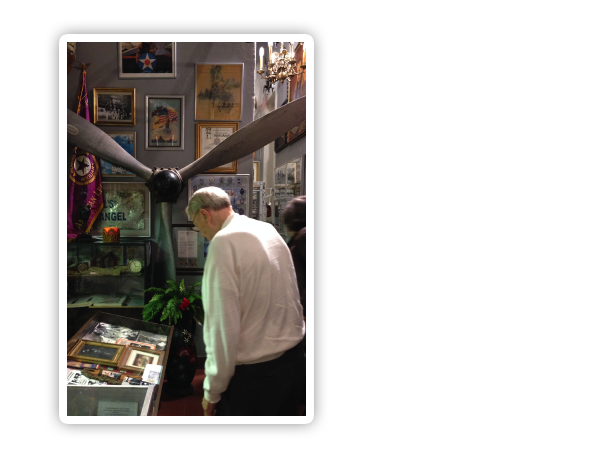
Day 4 - details
The 485th Bomb Group lost the Lawrence crew on the mission to Auschwitz on September 13th, 1944.
The B-24 disitegrated near Zygodowice. 6 airmen died and a Polish girl was killed, too. 5 men became POWs. The memorial was erected in the place where the Americans were buried before they were disinterred after the war.
The local Poles girls kept bringing flowers to this grave, although Germans threatened them to send them to Auschwitz for doing this.
The B-24 disitegrated near Zygodowice. 6 airmen died and a Polish girl was killed, too. 5 men became POWs. The memorial was erected in the place where the Americans were buried before they were disinterred after the war.
The local Poles girls kept bringing flowers to this grave, although Germans threatened them to send them to Auschwitz for doing this.
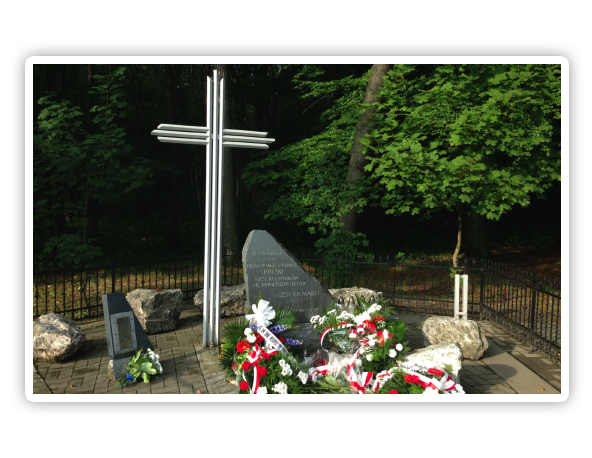
Day 4 - details
The Lawrence crew is commemorated in a private museum in Wadowice, not far from the crash site.
The museum is dedicated to Polish-American friendship and partnership, and holds many memorabilia, some dating back to the 19th century.
Wadowice is famous for late John Paul II, who was born and raised here. If the group is interested, we may see his home which was converted into a museum.
The museum is dedicated to Polish-American friendship and partnership, and holds many memorabilia, some dating back to the 19th century.
Wadowice is famous for late John Paul II, who was born and raised here. If the group is interested, we may see his home which was converted into a museum.
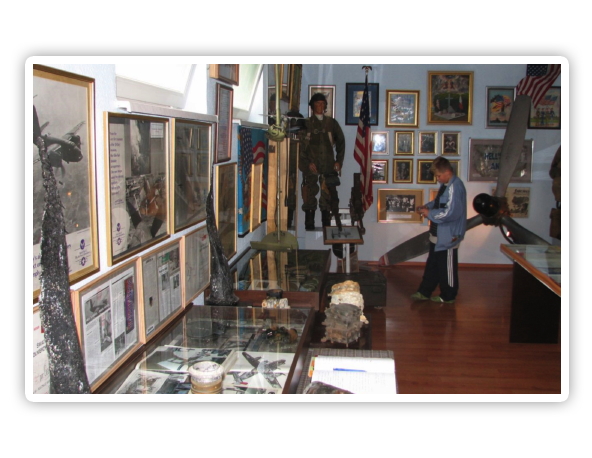
Day 4 - details
Another crew shot down on the mission to Auschwitz on 13/9/44 was from a sister Bomb Group, the 460th.
The bomber went down several miles further south from the Lawrence crew. Two airmen died, some were captured by the Germans.
The memorial was erected in 2009, and in 2014 a 90-year-young veteran from this crew visited it.
Interestingly, some airmen managed to escape to Slovakia where they joined partisans. Germans captured them in December 1944.
The bomber went down several miles further south from the Lawrence crew. Two airmen died, some were captured by the Germans.
The memorial was erected in 2009, and in 2014 a 90-year-young veteran from this crew visited it.
Interestingly, some airmen managed to escape to Slovakia where they joined partisans. Germans captured them in December 1944.
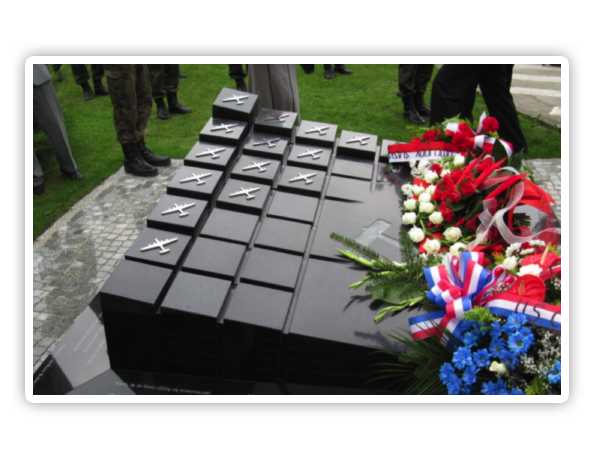
Day 5
On this day we will leave Krakow and go to Kędzierzyn-Koźle, known in World War Two as Blechhammer.
The town’s synthetic fuel factories were at the extreme range of the USAAF bombers, and were heavily defended by anti-aircraft guns.
We will see the factories, a former slave labor camp, and the museum dedicated to the 15th Air Force.
The town’s synthetic fuel factories were at the extreme range of the USAAF bombers, and were heavily defended by anti-aircraft guns.
We will see the factories, a former slave labor camp, and the museum dedicated to the 15th Air Force.
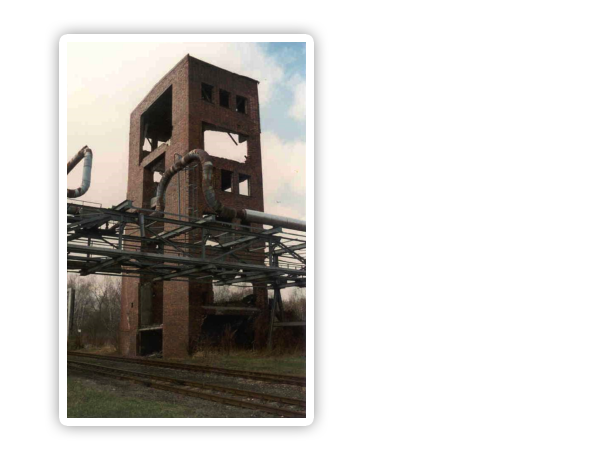
Day 5 - details
Blechhammer South, Blechhammer North and Odertal were 3 synthetic fuel plants located within few miles from one another.
They were bombed by the 15th Air Force several times, and more than 30 bombers were shot down in the target area.
The factories were rebuilt after the war and are still in operation, with bombed out World War Two buildings scattered within their perimeters.
They were bombed by the 15th Air Force several times, and more than 30 bombers were shot down in the target area.
The factories were rebuilt after the war and are still in operation, with bombed out World War Two buildings scattered within their perimeters.
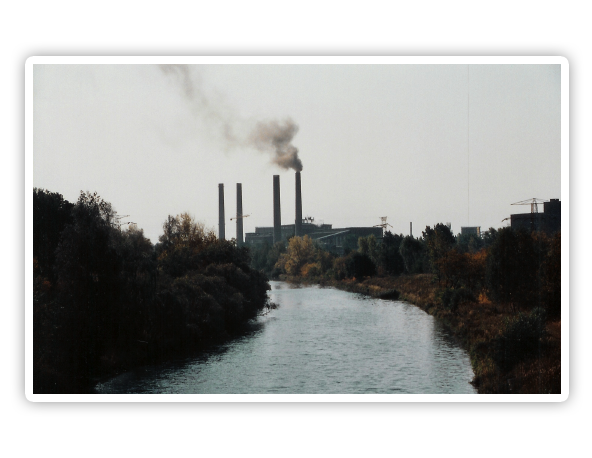
Day 5 - details
Building and maintaining the factories required many workers. Germans built camps for almost 60,000 people around the factories.
They were Jews from Auschwitz sub-camp, forced labor from all over Europe, British and French POWs, and contract workeds from counties allied with the Third Reich.
Remains of the camps are still visible in forests around Blechhammer, and the Jewish camp is still partly preserved with a crematorium and a few concrete watch-towers.
They were Jews from Auschwitz sub-camp, forced labor from all over Europe, British and French POWs, and contract workeds from counties allied with the Third Reich.
Remains of the camps are still visible in forests around Blechhammer, and the Jewish camp is still partly preserved with a crematorium and a few concrete watch-towers.
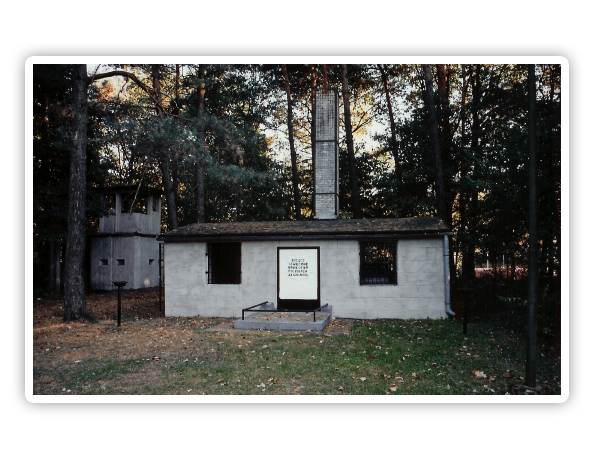
Day 5 - details
The bombing missions to the Blechammer factories are remembered in a small private museum.
The association which runs the museum documents American missions, forced labor camps, German anti-aircraft defences, and other wartime stories from the area.
Some wreckage from 485th Bomb Group B-24s is displayed at the museum. The Group’s commander, Col. "Pop" Arnold was shot down here. The exhibition honors the MIAs from 485th Bomb Group, too.
The association which runs the museum documents American missions, forced labor camps, German anti-aircraft defences, and other wartime stories from the area.
Some wreckage from 485th Bomb Group B-24s is displayed at the museum. The Group’s commander, Col. "Pop" Arnold was shot down here. The exhibition honors the MIAs from 485th Bomb Group, too.
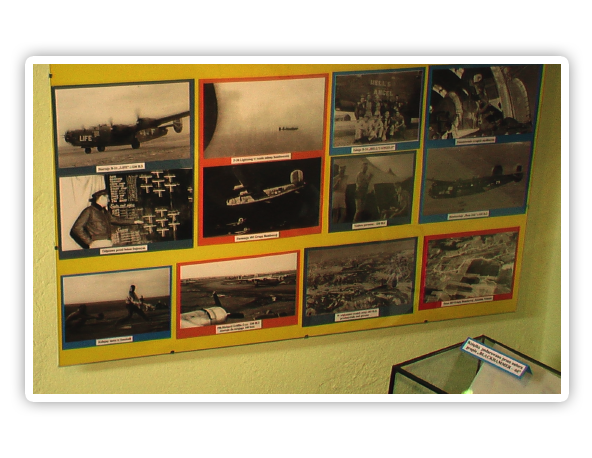
Day 6
After staying overnight in Wrocław, we will continue west to Żagań.
We will visit a museum dedicted to POW camps. It is located where the Stalag Luft III was. This camp was known from The Great Escape.
We will see a reconstructed POW hut, foundations of the camp’s buildings, and where the main Great Escape tunnel (Harry) was.
We will visit a museum dedicted to POW camps. It is located where the Stalag Luft III was. This camp was known from The Great Escape.
We will see a reconstructed POW hut, foundations of the camp’s buildings, and where the main Great Escape tunnel (Harry) was.
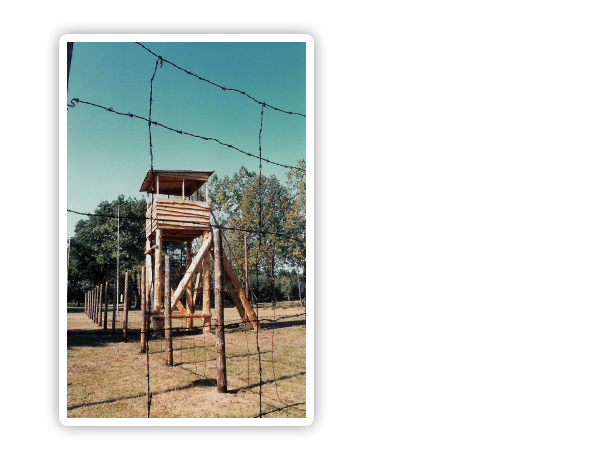
Day 6 - details
The Stalag Luft III was one of 4 large POW camps ran by Luftwaffe for the captured Allied airmen.
The museum rooms recreate the living conditions in the camp, and displays memorabilia and archeological finds.
The camp consisted of 4 compounds, where almost 11,000 airmen were kept. 2,500 of them were British, 7,500 were Americans, and 900 were from other Allied Air Forces.
The museum rooms recreate the living conditions in the camp, and displays memorabilia and archeological finds.
The camp consisted of 4 compounds, where almost 11,000 airmen were kept. 2,500 of them were British, 7,500 were Americans, and 900 were from other Allied Air Forces.
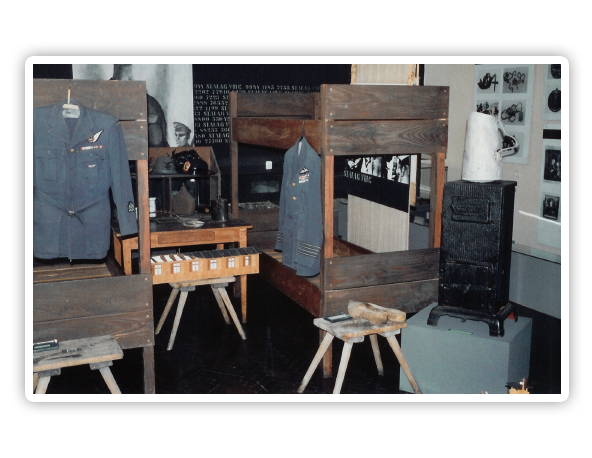
Day 6 - details
The first escape occured in October 1943 when POWs used a gymnastic vaulting horse to dig a tunnel from the exercise square. 3 airmen escaped and reached safety.
This encouraged the remaining POWs to do something bigger. They started preparing a massive escape of up to 200 men.
Archeological excavations revealed recently the remains of the tunnels. Those who want to try how it was like to go through a tunnel to liberty, can use a reconstructed shorten version.
This encouraged the remaining POWs to do something bigger. They started preparing a massive escape of up to 200 men.
Archeological excavations revealed recently the remains of the tunnels. Those who want to try how it was like to go through a tunnel to liberty, can use a reconstructed shorten version.
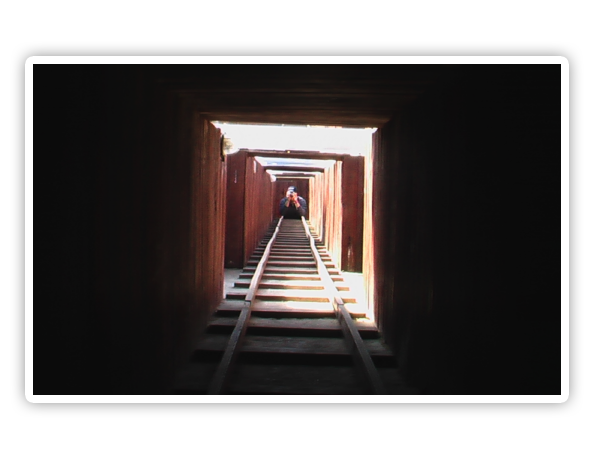
Day 6 - details
Up to 600 prisoners participated in the Great Escape preparation.
Finally, in the night from March 24th to 25th 1944, 76 men crawled through the tunnel and left the camp.
73 escapees were captured, and 50 were executed at the order of Adolf Hitler. The remaining prisoners at Stalag Luft III built a memorial for them at the camp’s cemetery.
Finally, in the night from March 24th to 25th 1944, 76 men crawled through the tunnel and left the camp.
73 escapees were captured, and 50 were executed at the order of Adolf Hitler. The remaining prisoners at Stalag Luft III built a memorial for them at the camp’s cemetery.
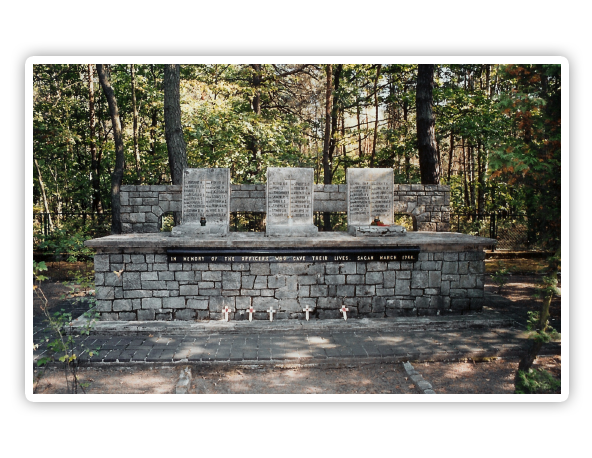
Day 7
The last day of the trip will be spent in Wrocław, and in the afternoon we will drive back to Kraków.
We will visit Wrocław’s magnificent Main Square, with a place that has been serving beer since 1275.
We will see "Panorama Racławicka" (1894) which is a giant 360 degrees painting best viewed from a centrally located viewing platform.
We will visit Wrocław’s magnificent Main Square, with a place that has been serving beer since 1275.
We will see "Panorama Racławicka" (1894) which is a giant 360 degrees painting best viewed from a centrally located viewing platform.
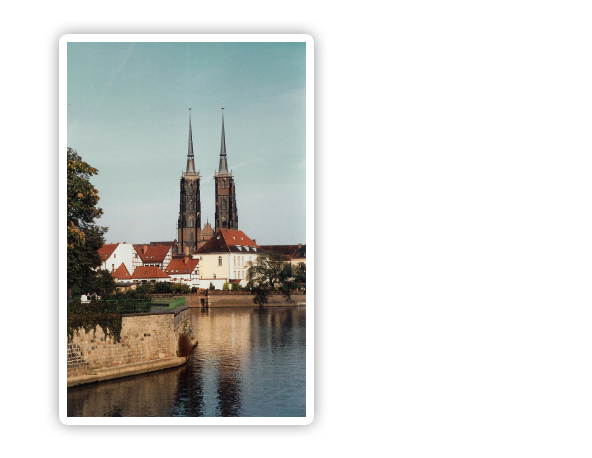
Day 7 - details
Wrocław is a vibrant city with a rich history. It is a capital of a region that has always been somewhere between Germany, Poland, and the Czech Republic.
The Town Hall is the city’s landmark, with a beautiful sundial, and "Piwnica Swidnicka" (Swidnica Cellar) which is Europe’s oldest restaurant.
The Town Hall is the city’s landmark, with a beautiful sundial, and "Piwnica Swidnicka" (Swidnica Cellar) which is Europe’s oldest restaurant.
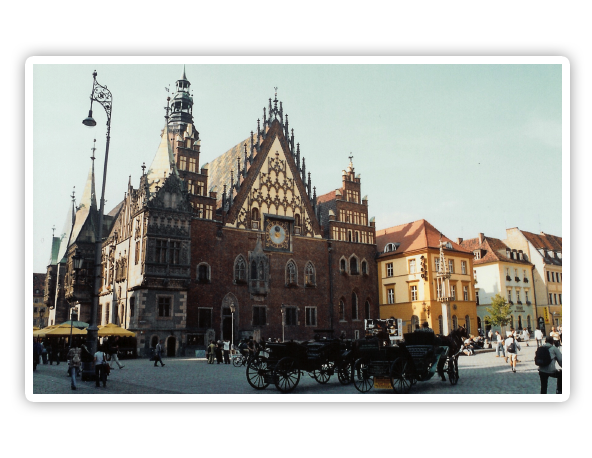
Day 7 - details
Another landmark of Wrocław is a street called "Jatki" (Shambles or Butcher’s). This is the place where Wrocław’s butchers lived and worked.
This time is remembered with a memorial to all animals who gave their lives so that the citizens and visitors of Wrocław had enough to eat.
This time is remembered with a memorial to all animals who gave their lives so that the citizens and visitors of Wrocław had enough to eat.
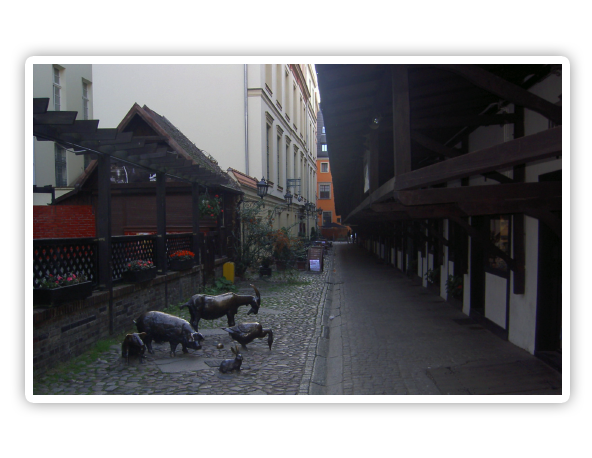
Day 7 - details
"Panorama Racławicka" is one of the few remaining panoramas, which were the 19th century version of 3D entertainment.
The painting is 114 meters long and 15 meters high. It is displayed in an oval building, and it forms a 360 degrees view.
Dioramas placed between the platform and the painting give you an impression of being in the middle of the battlefield presented in the painting.
The painting is 114 meters long and 15 meters high. It is displayed in an oval building, and it forms a 360 degrees view.
Dioramas placed between the platform and the painting give you an impression of being in the middle of the battlefield presented in the painting.
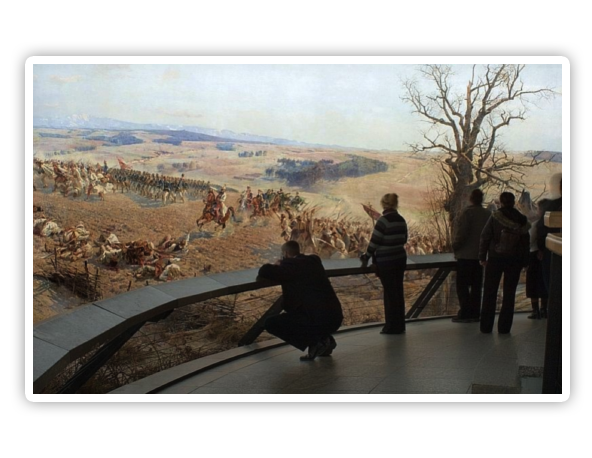
Summary
Price per person
(more details on next slide)
$1019 (single room)
$769 (double room)
Dates
July 12-18 or August 16-22
Max number of travellers
7
Min number of travellers
5
Hotels
Ibis Kraków Centrum Ibis Styles Wroclaw Centrum
Total driving distance
750 miles
$1019 (single room)
$769 (double room)
Dates
July 12-18 or August 16-22
Max number of travellers
7
Min number of travellers
5
Hotels
Ibis Kraków Centrum Ibis Styles Wroclaw Centrum
Total driving distance
750 miles

Summary - details
The tour cost structure
Hotel (Paid at the hotel. Szymon books for you)
$590 (single room)
$340 (double room)
Personal guide Transportation Entry tickets (Paid to Szymon)
$429
The tour cost excludes
Flights to/from Krakow
Airport transfers
Lunches and dinners
(estimated at $30 a day per person. 7 x $30 = $210)
Hotel (Paid at the hotel. Szymon books for you)
$590 (single room)
$340 (double room)
Personal guide Transportation Entry tickets (Paid to Szymon)
$429
The tour cost excludes
Flights to/from Krakow
Airport transfers
Lunches and dinners
(estimated at $30 a day per person. 7 x $30 = $210)

